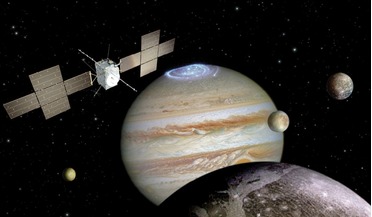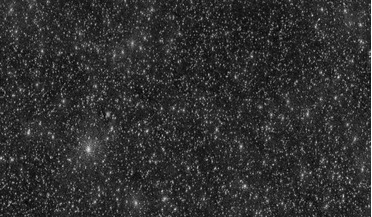 August 2017
Big science from small spacecraft
August 2017
Big science from small spacecraft
.... If we could position a radio telescope up at geostationary orbit (GEO) or higher, well above the ionosphere, we could observe and characterise these short-lived phenomena, a long-standing goal of the solar physics community. ...
 October 2017
Exploring Jupiter’s icy moons
October 2017
Exploring Jupiter’s icy moons
... the three-dimensional properties of the magnetodisc and in-depth study of the coupling processes within the magnetosphere, ionosphere and thermosphere. Aurora and radio emissions will be elucidated. Within Jupiter’s satellite system, JUICE will also...
 April 2018
Future Cubesat swarms pose significant communications challenges
April 2018
Future Cubesat swarms pose significant communications challenges
...and HiDEF missions were proposed in NASA’s 2009 Heliophysics missions to study small scale plasma physics in the ionosphere/thermosphere. The ARMADA mission proposes a swarm of 20 to 100 spacecraft in pseudo-random orbits featuring GPS receivers with...
 May 2019
The inadequacies and dangers of modern rocket technology
May 2019
The inadequacies and dangers of modern rocket technology
... million tonnes of ozone in one launch (depending on ionospheric conditions), because it uses ozone-extinguishing chemical elements as ...of the upper atmosphere, causing turbulence in the ionosphere and even affecting the geomagnetic field in the ...
 June 2019
Solar superstorms and their effects on Earth
June 2019
Solar superstorms and their effects on Earth
...) identified several critical steps to improve its short and long-term forecasting capability of geomagnetic storms and ionospheric disturbance, some of which have now taken place. They include securing a dedicated, operational solar-wind monitoring...
 22 February 2021
Not stars, but 25,000 supermassive black holes!
22 February 2021
Not stars, but 25,000 supermassive black holes!
...metres in length. Observing the sky at long radio wavelengths is complicated. For starters, free electrons in the Earth’s ionosphere act like a cloudy lens that constantly moves across the radio telescope, making observations difficult. ‘It's similar...